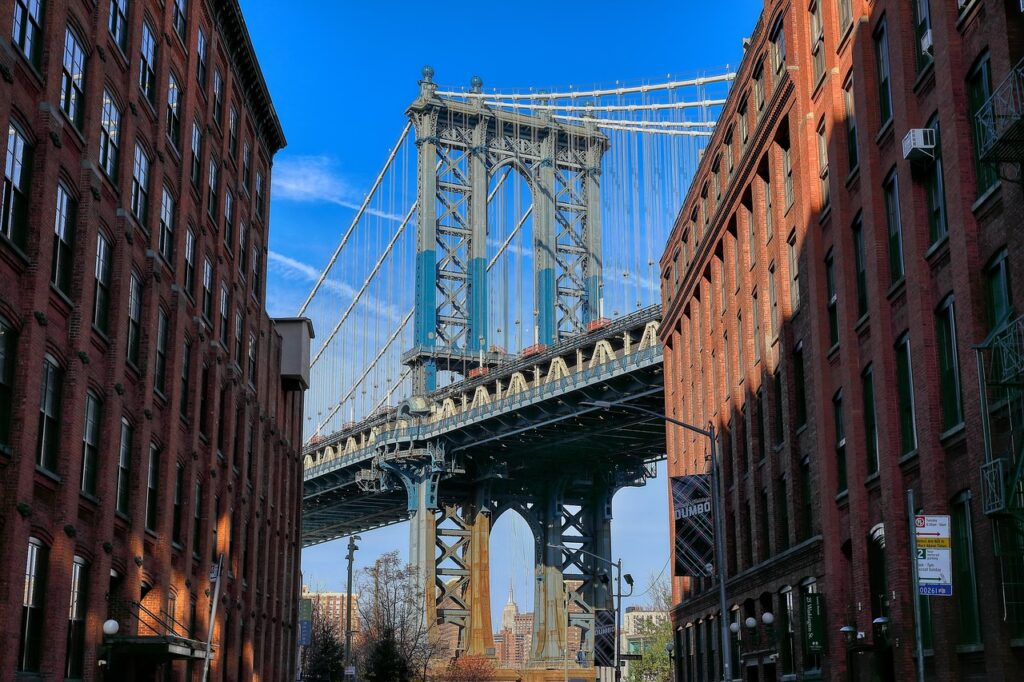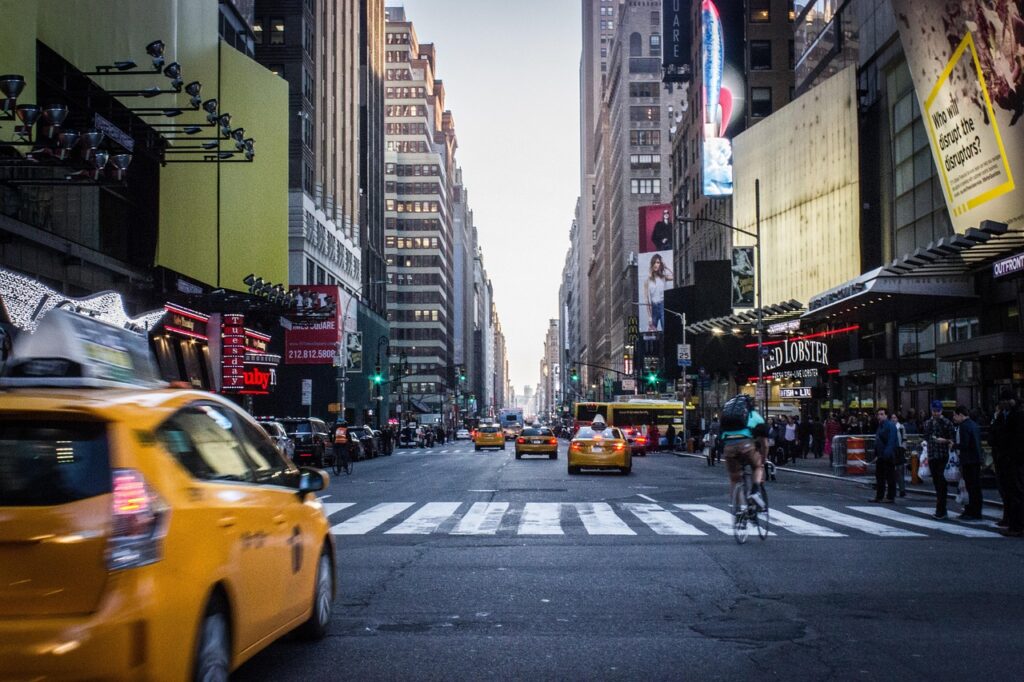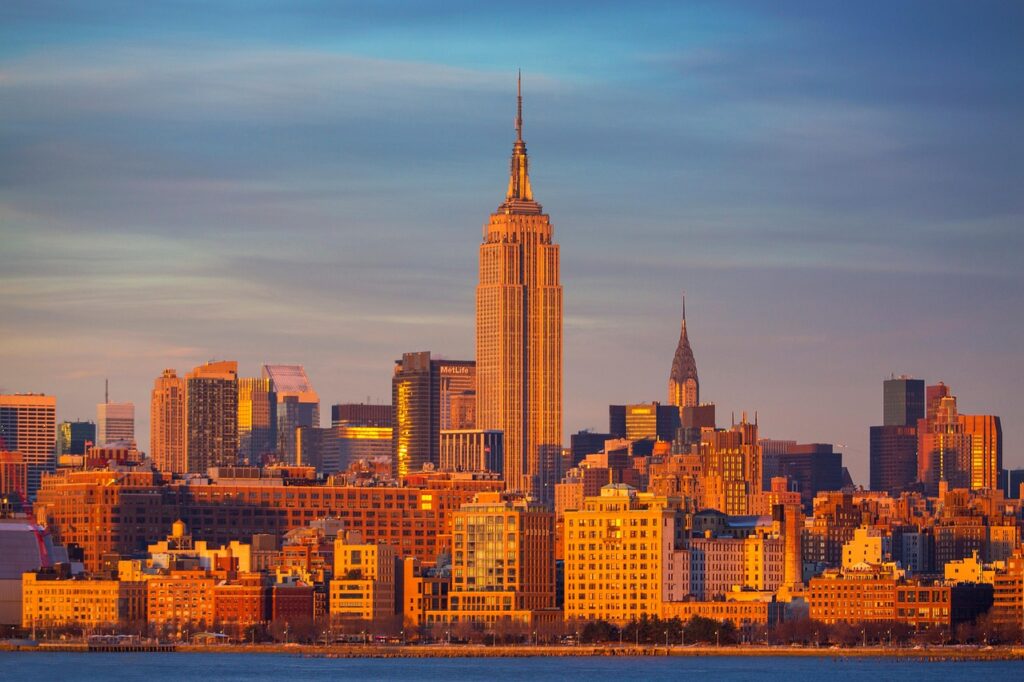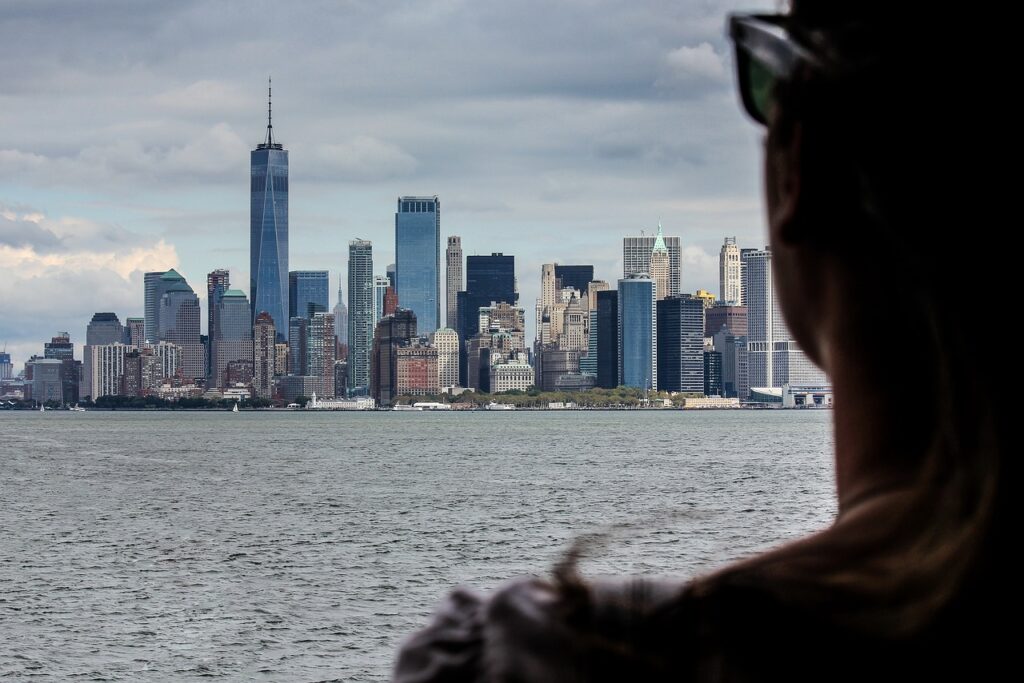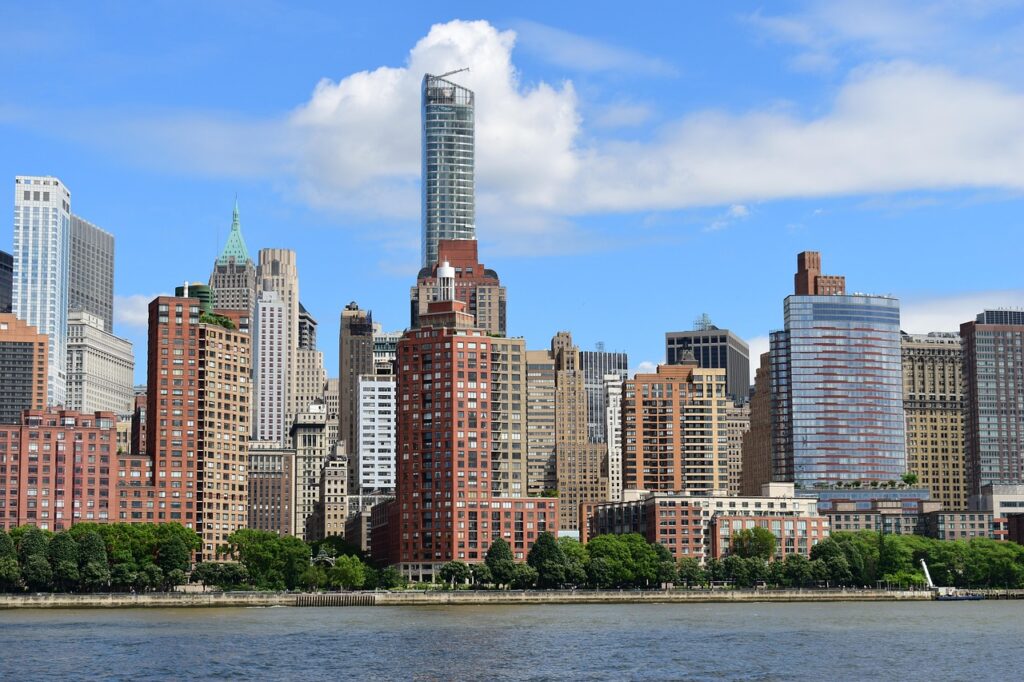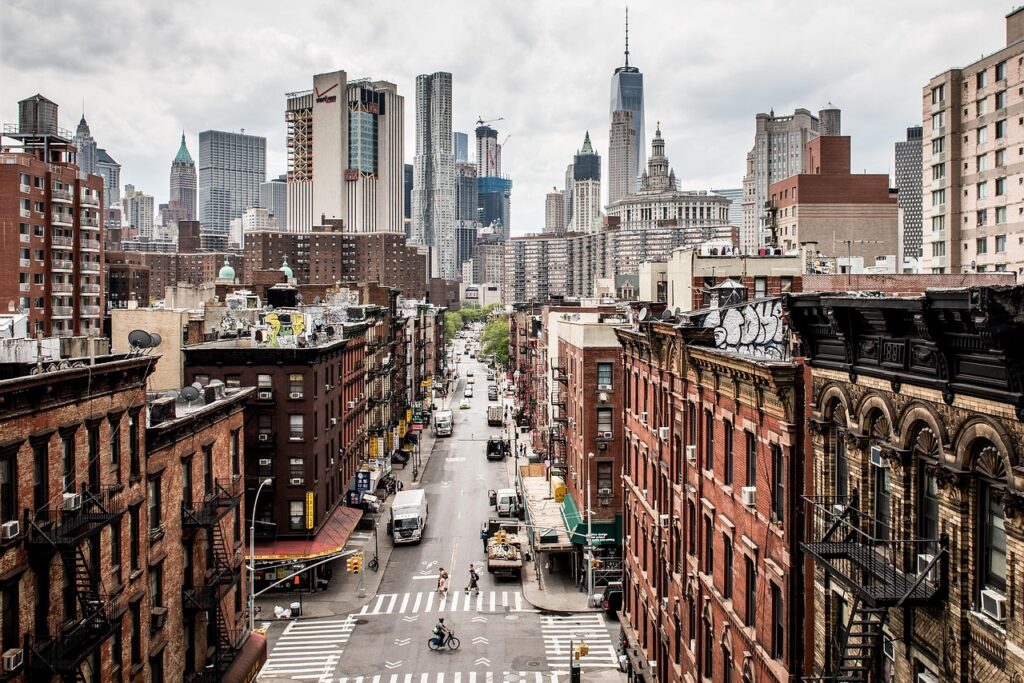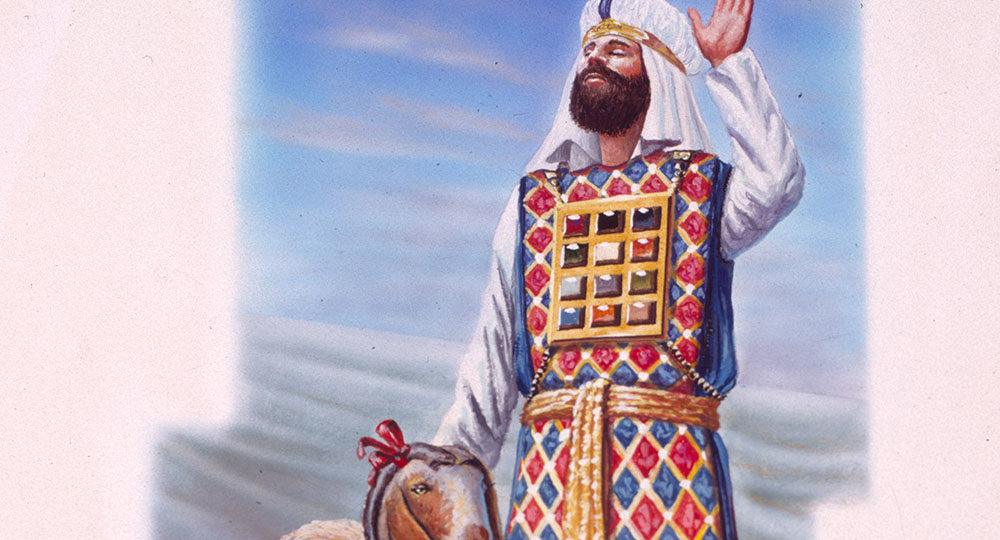
There are places on Earth that don’t merely exist; they pulse with an undeniable energy, a constant hum of history, ambition, and endless reinvention. Manhattan, the smallest yet most densely populated of New York City’s five boroughs, is unequivocally one such place. It is a vibrant microcosm of human endeavor, a testament to resilience, and a perpetual canvas where the past and future intertwine in a breathtaking urban symphony.
From its ancient indigenous trails to its towering modern skyscrapers, Manhattan has borne witness to centuries of pivotal moments that have not only shaped its own destiny but have reverberated across the nation and the globe. It is a place where every street corner tells a story, every building holds a memory, and the collective spirit of millions creates an unparalleled metropolitan experience. To truly appreciate Manhattan is to embark on a journey through its layered history, understanding the forces that forged this remarkable island into the global icon it is today.
In this initial exploration, we will traverse the foundational chapters of Manhattan’s existence, tracing its lineage from its first inhabitants and European settlement, through its critical contributions to the American Revolution, and into the profound transformations that marked the 19th and much of the 20th centuries. Prepare to immerse yourself in the saga of an island that continually redefines what a city can be, a narrative rich with discovery, conflict, growth, and unparalleled human spirit.

1. **Manhattan’s Global Status and Defining Characteristics**Manhattan stands as a beacon of global influence, recognized universally as New York City’s economic and administrative core. It is not merely a borough; it is a declaration, frequently described as “the cultural, financial, media, and entertainment capital of the world.” This extraordinary reputation is built upon its unparalleled dynamism and its relentless pace of innovation and creativity.
Coextensive with New York County, Manhattan proudly holds the distinction of being the most densely populated and geographically smallest of New York City’s boroughs, as well as the smallest county by area in the entire state of New York. Despite its modest landmass, it exerts an outsized impact, centrally located within the Northeast megalopolis and forming the vibrant urban core of the New York metropolitan area.
The sheer concentration of life within Manhattan is astounding. The 2020 census recorded a population of 1,694,250 residents packed into a land area of just 22.66 square miles (58.69 km2). This translates to an astonishing 72,918 residents per square mile (28,154 residents/km2), making it one of the most densely populated locations on Earth. This intense demand for space also reflects in its real estate, where residential property commands the highest sale price per square foot in the United States, a testament to its enduring desirability and perceived value.
Read more about: Donald Trump: A Detailed Chronicle of His Life, Business, and Political Impact
2. **From Lenape Lands to New Amsterdam: Early European Settlement**Before the arrival of European ships, present-day Manhattan was a thriving landscape, an integral part of Lenapehoking territory. This land was inhabited by the Munsee, Lenape, and Wappinger tribes, whose settlements like Sapohanikan, Nechtanc, and Konaande Kongh were interconnected by a network of trails. Notably, the primary trail on the island, which would later evolve into the iconic Broadway, traversed from what is now Inwood in the north down to Battery Park in the south, reflecting an ancient understanding of the island’s natural pathways.
The very name ‘Manhattan’ itself carries echoes of its indigenous heritage. Its etymology is most likely, among other theories and via loaning by Dutch, from the Lenape’s local language Munsee. The word *manaháhtaan*, with *manah-* meaning “gather” and *-aht-* meaning “bow,” translates to “the place where we get bows” or “place for gathering the (wood to make) bows.” This connection is further reinforced by a Munsee tradition, recorded in the 19th century by Albert Seqaqkind Anthony, which explains that the island was named for a grove of hickory trees considered ideal for bowmaking.
European interaction with this significant land began in April 1524, when Florentine explorer Giovanni da Verrazzano, serving Francis I of France, became the first documented European to visit the area. Verrazzano sailed into the tidal strait now known as The Narrows, naming the land around Upper New York Harbor New Angoulême and the bay Santa Margarita. It was not until 1609 that Manhattan was first mapped during a voyage led by Henry Hudson, who encountered the island and its native inhabitants, and whose officer, Robert Juet, first recorded the name in writing as “Manna-hata.”
A permanent European presence in what became known as New Netherland was established in 1624, initiated by a Dutch fur trading settlement on Governors Island. By 1625, construction had begun on the citadel of Fort Amsterdam on Manhattan Island, which was later named New Amsterdam (Nieuw Amsterdam) in what is now Lower Manhattan. This pivotal moment, the establishment of Fort Amsterdam, is widely “recognized as the birth of New York City.” Peter Stuyvesant served as the last Dutch Director-General, overseeing its formal incorporation as a city on February 2, 1653, before English forces took control in 1664, renaming it “New York” after the English Duke of York and Albany. Although briefly reconquered by the Dutch in August 1673 and renamed “New Orange,” it was permanently ceded back to England the following year under the Treaty of Westminster.
3. **A Crucible of Revolution: Manhattan’s Role in America’s Founding**Manhattan played an exceptionally vital and often tumultuous role in the birth of the United States, serving as a critical battleground and a center of political activity during the American Revolutionary War. The island found itself at the very heart of the New York Campaign, a series of significant military engagements that unfolded in the early stages of the conflict, deeply impacting the fate of the fledgling Continental Army.
Following the intense fighting and the decisive Battle of Fort Washington on November 16, 1776, the Continental Army was compelled to abandon Manhattan, marking a strategic loss. The city itself suffered immense damage, particularly from the Great Fire of New York that raged during the campaign. With the American forces withdrawn, Manhattan was transformed into the primary “British military and political center of operations in North America for the remainder of the war,” a key stronghold for the loyalist cause.
The long period of British occupation finally drew to a close on November 25, 1783, a day that continues to be celebrated as Evacuation Day. It was on this historic occasion that George Washington made his triumphant return to Manhattan, symbolizing the departure of the last British forces from the city and the hard-won victory of American independence. This moment marked a profound turning point, paving the way for Manhattan’s subsequent role in the nascent republic.
In the immediate aftermath of the war, New York City, specifically its Lower Manhattan core, briefly served as the capital of the United States. From January 11, 1785, until 1789, it functioned as the fifth of five capitals under the Articles of Confederation, with the Continental Congress convening at New York City Hall, then located at Fraunces Tavern. More significantly, it became “the first capital under the newly enacted Constitution of the United States,” from March 4, 1789, to August 12, 1790, a period during which Federal Hall hosted monumental events. It was here that the United States Supreme Court met for the very first time, the United States Bill of Rights were meticulously drafted and ratified, and the Northwest Ordinance, a crucial framework for admitting new states to the Union, was adopted. Manhattan’s contribution to the nation’s founding principles is immeasurable.
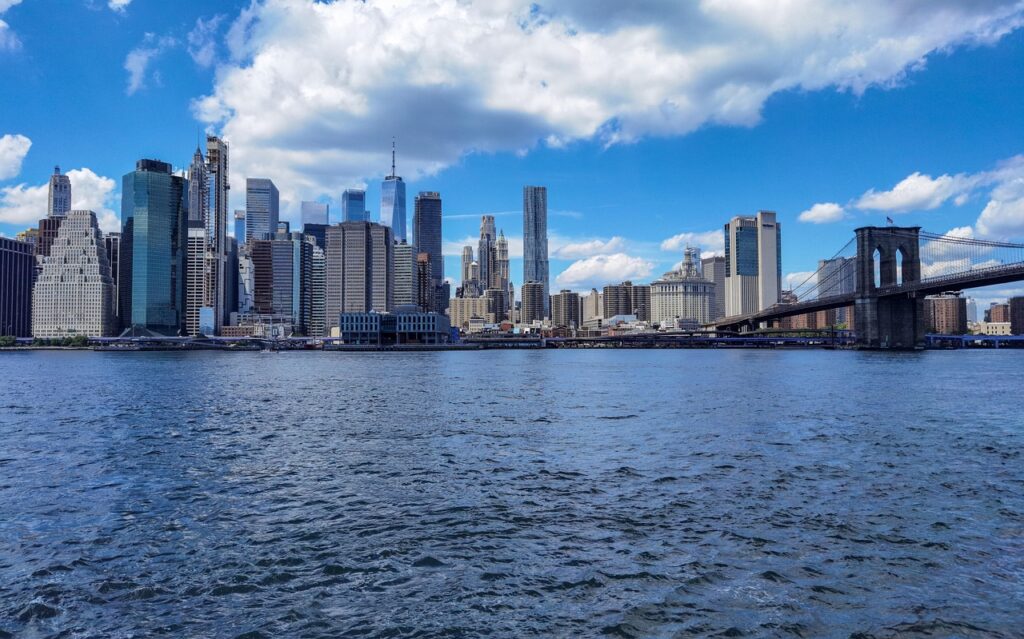
4. **The 19th Century Boom: Economic Growth and Social Change**The 19th century was a period of explosive growth and profound transformation for Manhattan, solidifying its position as a burgeoning economic powerhouse and a magnet for human ambition. Its rise as an economic center was significantly bolstered by the visionary policies and practices of Alexander Hamilton, the first Secretary of the Treasury, who actively worked to expand the city’s role as a hub of commerce and industry.
This rapid expansion quickly translated into demographic dominance. By 1810, New York City, which at that time was largely confined to Manhattan Island, had proudly “surpassed Philadelphia as the most populous city in the United States.” To accommodate this burgeoning population and anticipate future growth, “The Commissioners’ Plan of 1811 laid out the island of Manhattan in its familiar grid plan,” a design that would forever shape its urban landscape and facilitate its organized development.
The city’s economic ascendancy was further amplified by a monumental engineering feat: “the opening of the Erie Canal in 1825.” This waterway drastically “cutting transportation costs by 90% compared to road transport,” effectively connected the Atlantic port of New York to the vast agricultural markets of the Midwestern United States and Canada. This strategic link cemented Manhattan’s role as the nation’s premier commercial gateway, channeling immense wealth and goods through its harbors.
Amidst this rapid development, the political landscape also evolved. Tammany Hall, a powerful Democratic Party political machine, began to consolidate its influence, drawing significant support from the growing waves of Irish immigrants. This culminated in the landmark election of Fernando Wood as the first Tammany mayor in 1854, marking a new era in city politics. Concurrently, a visionary project for public green space took shape; “Central Park, which opened its first portions to the public in 1858,” became a sprawling 840-acre (340 ha) oasis in the center of the island and notably, “the first landscaped public park in an American city.”
Manhattan also found itself embroiled in the complexities of the American Civil War, playing a “complex role.” While the city maintained “strong commercial ties to the South,” internal tensions flared. A potent mix of anger over conscription, resentment against Lincoln’s war policies, and fears about free Black individuals competing for jobs with poor immigrants, culminated in the infamous “three-day-long New York Draft Riots of July 1863.” These riots stand as “among the worst incidents of civil disorder in American history,” a stark reminder of the social fault lines within the bustling metropolis.
The post-Civil War era saw a dramatic increase in European immigration, transforming Manhattan into the quintessential “first stop for millions seeking a new life in the United States.” This pivotal role was symbolically acknowledged by “the dedication of the Statue of Liberty in 1886,” a beacon of hope in New York Harbor. However, this massive influx of diverse populations also brought “further social upheaval.” Tenements packed with poorly paid laborers from various nations turned the city into a “hotbed of revolution (including anarchists and communists among others), syndicalism, racketeering, and unionization,” reflecting the intense struggles for dignity and rights. The 19th century concluded with significant infrastructure expansion, as “the opening of the Brooklyn Bridge across the East River in 1883 established a road connection to Brooklyn and the rest of Long Island.” This set the stage for the administrative consolidation in 1898, when New York City officially united with three neighboring counties to form “the City of Greater New York,” designating Manhattan as one of its five core boroughs.
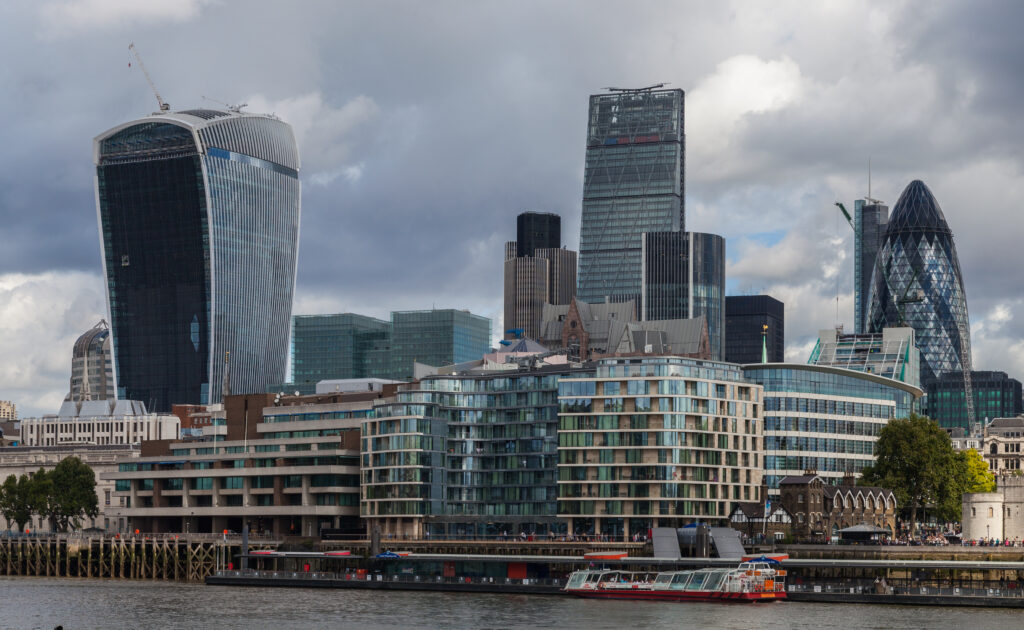
5. **The Roaring Twenties to Post-War Development: Skyscrapers and Social Progress**The dawn of the 20th century propelled Manhattan into an era of unprecedented urban development and cultural dynamism, fundamentally reshaping its skyline and social fabric. A crucial element in binding the rapidly expanding city together was “the construction of the New York City Subway, which opened in 1904.” This subterranean marvel revolutionized transportation, allowing residents to traverse the sprawling metropolis with newfound ease. Further reinforcing connectivity, a series of impressive bridges were completed, including the Williamsburg Bridge (1903) and Manhattan Bridge (1909) linking to Brooklyn, and the Queensboro Bridge (1909) connecting to Queens, effectively weaving the disparate parts of the new city into a cohesive whole.
The 1920s, often celebrated as the ‘Roaring Twenties,’ brought a surge of cultural and architectural innovation to Manhattan. This decade witnessed “large arrivals of African-Americans as part of the Great Migration from the southern United States,” transforming Upper Manhattan into the vibrant epicenter of the “Harlem Renaissance.” This cultural explosion, alongside a “larger boom time in the Prohibition era,” fueled an architectural race to the sky. Iconic skyscrapers began “competing for the skyline,” with the Woolworth Building (1913), 40 Wall Street (1930), the Chrysler Building (1930), and the Empire State Building (1931) successively “leapfrogging each other to take their place as the world’s tallest building.” These structures not only defined Manhattan’s silhouette but also symbolized American ambition and ingenuity.
However, this era of progress was not without its profound challenges and calls for social justice. On March 25, 1911, the tragic “Triangle Shirtwaist Factory fire in Greenwich Village killed 146 garment workers,” a devastating event that became a catalyst for monumental change. The catastrophe spurred “overhauls of the city’s fire department, building codes, and workplace safety regulations,” setting new standards for industrial environments. A year later, approximately 20,000 workers, a significant quarter of whom were women, marched upon Washington Square Park to commemorate the fire’s victims. Many of these women donned the fitted tucked-front blouses produced by the factory, turning this clothing style into “the working woman’s uniform and a symbol of women’s liberation,” powerfully reflecting the burgeoning alliance between the labor and suffrage movements.
Even as the Great Depression cast its long shadow over the nation, Manhattan’s spirit of innovation persisted. “Despite the Great Depression, some of the world’s tallest skyscrapers were completed in Manhattan during the 1930s,” including numerous Art Deco masterpieces that continue to grace the city’s skyline today. Among these architectural triumphs were the aforementioned Empire State Building, the Chrysler Building, and 30 Rockefeller Plaza. The post-war period ushered in a new “economic boom,” leading to the development of massive housing projects aimed at accommodating returning veterans, with the “largest being Stuyvesant Town–Peter Cooper Village, which opened in 1947.” This era also saw Manhattan solidify its international diplomatic role as “The United Nations relocated to a new headquarters that was completed in 1952 along the East River,” establishing a global nexus of diplomacy within the borough.
6. **Late 20th Century: Challenges, Financial Revival, and Activism**The latter half of the 20th century presented Manhattan with a complex tapestry of challenges and remarkable resurgences, proving its enduring capacity for adaptation and transformation. The 1970s marked a particularly difficult period; “job losses due to industrial restructuring caused New York City, including Manhattan, to suffer from economic problems and rising crime rates.” This era saw a dip in the city’s famed vigor, creating a landscape that was both grittier and more vulnerable.
Despite the prevailing difficulties, the 1980s heralded a significant turning point, especially for Manhattan’s financial core. “While a resurgence in the financial industry greatly improved the city’s economic health in the 1980s,” the challenge of rising crime rates persisted into the early 1990s. Nevertheless, “the 1980s saw a rebirth of Wall Street, and Manhattan reclaimed its role as the world’s financial center,” experiencing an impressive surge in employment where “Wall Street employment doubl[ed] from 1977 to 1987.” This economic revitalization underscored Manhattan’s pivotal global financial influence.
Simultaneously, the borough became a focal point for crucial social activism. “The 1980s also saw Manhattan at the heart of the AIDS crisis, with Greenwich Village at its epicenter,” a period that mobilized communities and ignited a powerful movement for awareness, research, and compassion. Further north, Times Square and 42nd Street, which in the 1970s had become “emblematic of the city’s decline” and were infamously dubbed the “sleaziest block in America” by a 1981 *Rolling Stone* article due to their adult entertainment and crime, underwent a remarkable transformation.
By the “late 1990s, led by efforts by the city and the Walt Disney Company,” this once-seedy stretch was dramatically revived, blossoming into a vibrant center of tourism and commerce. It was so thoroughly reimagined that *The New York Times* described it as “arguably the most sought-after 13 acres of commercial property in the world.” This profound rejuvenation showcased Manhattan’s ability to shed its past difficulties and reclaim its status as a premier global destination, attracting visitors and investment alike.
As the century drew to a close, a palpable sense of renewed optimism permeated the borough. “By the 1990s, crime rates began to drop dramatically,” fostering a safer environment that, combined with “low interest rates and Wall Street bonus payments,” helped “fuel the growth of the real estate market.” New and vital economic sectors also began to emerge; “Silicon Alley” notably took root “in the Flatiron District, cementing technology as a key component of Manhattan’s economy.” However, this period of resurgence was tragically punctuated by the “1993 World Trade Center bombing,” a terrorist attack described by the FBI as “something of a deadly dress rehearsal for 9/11,” which tragically claimed six lives and served as a chilling precursor to future devastation. This moment reminded the city of its enduring vulnerability even amidst its triumphs.
7. **21st Century Transformations: Resilience and Redefinition**The dawn of the 21st century presented Manhattan with its most profound challenges and an equally remarkable display of resilience, reshaping its urban fabric and global identity. On a somber Tuesday morning, September 11, 2001, the borough became the site of unimaginable tragedy. The Twin Towers of the original World Trade Center, once proud symbols of American enterprise, were struck by hijacked aircraft and subsequently collapsed in a devastating terrorist attack launched by al-Qaeda. This horrific event caused extensive damage to surrounding buildings and skyscrapers throughout Lower Manhattan.
The attacks tragically claimed the lives of 2,606 people who had been in the buildings, in addition to those aboard the planes, leaving an indelible mark on the city’s psyche. In the years that followed, Lower Manhattan underwent a monumental restoration, a testament to the city’s unwavering spirit. The rebuilding efforts culminated in 2014 with the completion of the new One World Trade Center, a towering beacon measuring 1,776 feet (541 m) to the top of its spire, proudly reclaiming its place as the tallest building in the Western Hemisphere and, as of 2023, the world’s seventh-tallest building.
Beyond physical rebuilding, Manhattan continued to be a crucible for social movements. The Occupy Wall Street protests, which ignited in Zuccotti Park within the Financial District on September 17, 2011, garnered global attention. This grassroots movement against social and economic inequality resonated worldwide, spawning the broader Occupy movement and reaffirming Manhattan’s role as a platform for challenging established norms and advocating for change.
The borough also faced environmental adversities, notably Hurricane Sandy, which swept through on October 29 and 30, 2012. This superstorm caused extensive destruction, ravaging portions of Lower Manhattan with record-high storm surges from New York Harbor, severe flooding, and fierce winds. Hundreds of thousands of residents experienced power outages, while gasoline shortages and widespread disruptions to mass transit systems added to the chaos. The profound impacts of Hurricane Sandy have since spurred critical discussions about the necessity of constructing seawalls and other coastal barriers along the borough’s shorelines to mitigate the risks of future such events.
8. **The Island’s Unique Geography: Bounded by Water, Defined by Rivers**Manhattan’s geography is as distinctive as its skyline, primarily comprising Manhattan Island itself, a slender landmass nestled near the southern tip of New York State. This island is geographically contained and defined by three major waterways: the Hudson River to its west, the East River to its east, and the Harlem River to its north, which separates it from the Bronx and the mainland United States. This unique aquatic embrace contributes significantly to its identity as a global city.
The island of Manhattan stretches approximately 13.4 miles (21.6 km) from its northernmost point to its southern tip and, at its widest near 14th Street, spans about 2.3 miles (3.7 km). This compact size, combined with its immense population, makes it one of the most densely populated locations on Earth, a characteristic that fundamentally shapes its urban development and daily life. The borough is also coextensive with New York County, holding the distinction of being the smallest county by area in the entire state of New York.
Beyond the main island, Manhattan’s borough includes several smaller adjacent islands, each with its own history and significance. These include Randalls and Wards Islands, which are now joined by landfill, as well as Roosevelt Island, U Thant Island (legally Belmont Island), Governors Island, and Liberty Island—the latter two famously hosting historical landmarks like the Statue of Liberty, an exclave administered by Manhattan. Furthermore, a small neighborhood called Marble Hill, though now physically located on the U.S. mainland due to the 1895 Harlem River Ship Canal project and subsequent infilling of the old riverbed, officially remains a part of Manhattan.
Throughout its history, land reclamation has played a pivotal role in expanding Manhattan’s footprint. Early in the 19th century, Lower Manhattan was extended from the natural Hudson shoreline at Greenwich Street to what is now West Street. A more recent and significant example occurred during the construction of the World Trade Center in 1968, where 1.2 million cubic yards (920,000 m3) of excavated material were ingeniously used to expand the Manhattan shoreline, giving birth to Battery Park City. More recently, in May 2021, Little Island, a unique park constructed on piers, opened on the Hudson River, further showcasing the ongoing evolution of Manhattan’s waterfront.
9. **Beneath the Urban Sprawl: Manhattan’s Geological Foundation**The towering skyscrapers that define Manhattan’s iconic skyline are not merely products of human ingenuity but are also deeply rooted in the island’s unique geological underpinnings. The very bedrock upon which much of Manhattan is built is exceptionally well-suited to support the immense weight and structural demands of these colossal buildings, making such architectural feats possible. This sturdy foundation is a key factor in Manhattan’s vertical growth.
This formidable bedrock is primarily composed of three distinct rock formations: Inwood marble, Fordham gneiss, and Manhattan schist. These ancient geological layers provide an incredibly stable and robust base, allowing for the construction of deep foundations that securely anchor Manhattan’s numerous skyscrapers. The presence and composition of these rocks have profoundly influenced where and how the city has developed, particularly its ability to build upwards.
Geologically, Manhattan is recognized as part of the Manhattan Prong physiographic region, an extension of the Appalachian Mountains that dips beneath the more recent sedimentary cover of the Atlantic Coastal Plain. This ancient, crystalline bedrock, exposed in many parts of the island, especially in Upper Manhattan, offers a glimpse into millions of years of geological history, silently supporting one of the world’s most dynamic urban environments. Without this strong geological foundation, the ambitious scale of Manhattan’s architecture would be significantly different, if not entirely unfeasible.
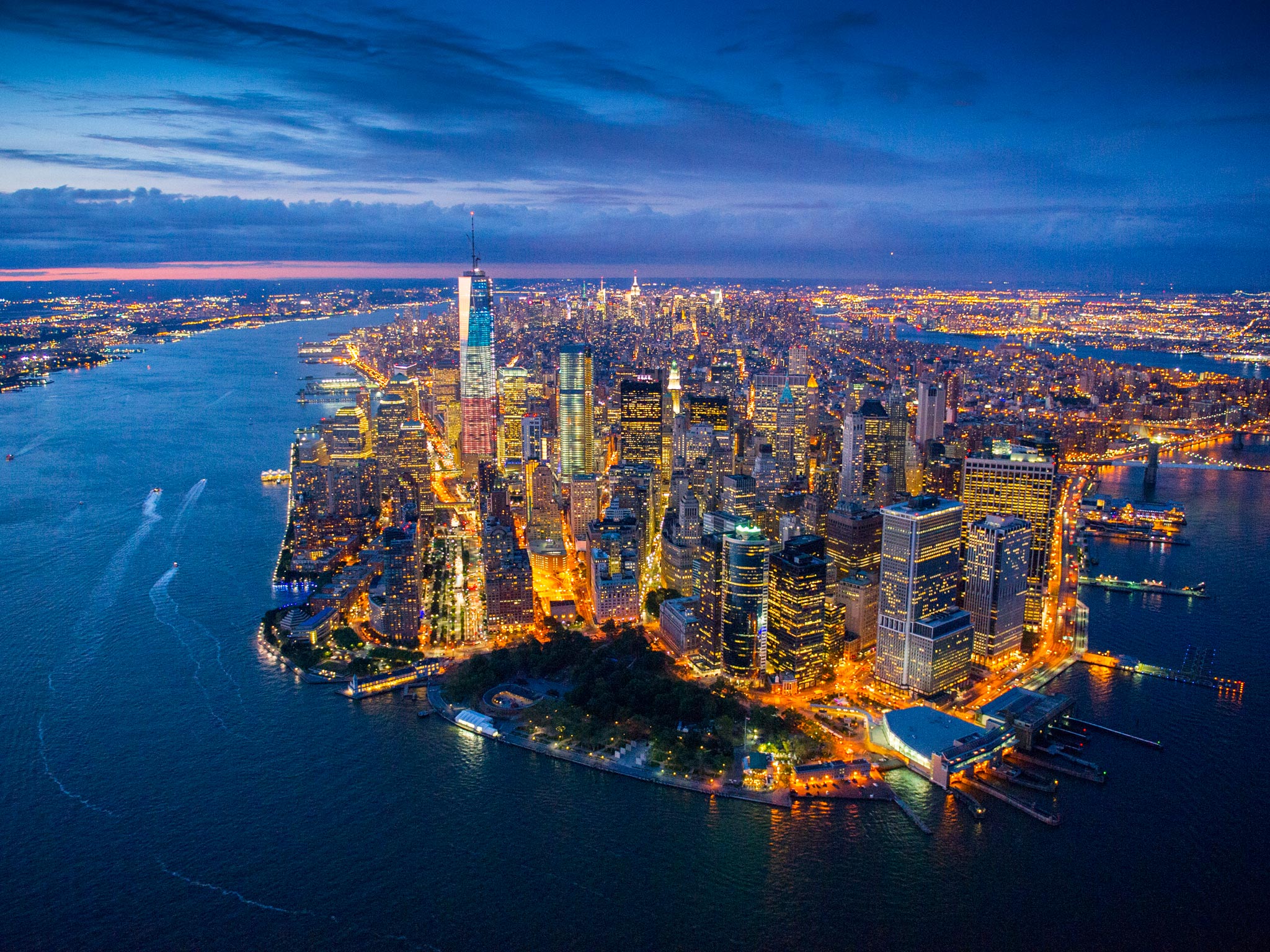
10. **Manhattan’s Climate: From Humid Subtropical to Four Distinct Seasons**Manhattan experiences a fascinating blend of climates, officially classified under the Köppen system as both a humid subtropical climate (Cfa) and a humid continental climate (Dfa). This unique classification makes it the northernmost major city on the North American continent with a humid subtropical climate, allowing for a diverse range of seasonal experiences throughout the year. The borough benefits from an average of 234 days with at least some sunshine annually, contributing to its vibrant outdoor life.
Winters in Manhattan are typically cold and damp, although the pervasive offshore wind patterns tend to moderate the more extreme effects that might otherwise be felt from the Atlantic Ocean. Furthermore, the partial shielding provided by the Appalachian Mountains helps to protect the city from the coldest air masses, resulting in warmer winter conditions compared to many inland North American cities situated at similar or even lower latitudes. The daily mean temperature in January, which is Manhattan’s coldest month, hovers around 32.6 °F (0.3 °C), though temperatures can drop to 10 °F (−12 °C) several times each winter and, remarkably, can also reach 60 °F (16 °C) on several days in the depths of the cold season.
Spring and autumn in Manhattan are known for their unpredictability, with conditions that can range from surprisingly chilly to delightfully warm. Generally, these transitional seasons are characterized by mild temperatures and comfortably low humidity, creating ideal conditions for exploring the city. Summers are typically warm to hot and notably humid, with July’s daily mean temperature reaching a balmy 76.5 °F (24.7 °C). However, the urban heat island phenomenon, where heat absorbed by buildings and pavement during the day is radiated back at night, often exacerbates nighttime conditions, raising temperatures by as much as 7 °F (4 °C) during periods of slow winds.
On average, daytime temperatures in Manhattan exceed 90 °F (32 °C) about 17 days each summer, and in some exceptional years, they can even soar past 100 °F (38 °C). The historical extremes recorded illustrate this variability, with a record low of −15 °F (−26 °C) on February 9, 1934, and a blistering high of 106 °F (41 °C) on July 9, 1936. The borough receives an annual average of 49.9 inches (1,270 mm) of precipitation, fairly evenly distributed throughout the year, with an average winter snowfall of 25.8 inches (66 cm) between 1981 and 2010, though this amount can vary considerably from one year to the next.
11. **A Mosaic of Cultures: Manhattan’s Diverse Neighborhoods**Manhattan’s true essence is arguably best captured through its extraordinary tapestry of neighborhoods, each possessing a distinct character and narrative. These areas, however, are not named according to any rigid convention, nor do they possess officially demarcated boundaries, contributing to their organic and ever-evolving identities. Some names are simply geographical, like the Upper East Side, while others vividly reflect ethnic communities, such as Little Italy. A modern trend has seen the rise of acronyms, giving us recognizable names like TriBeCa (for “TRIangle BElow CAnal Street”), SoHo (“SOuth of HOuston”), NoLIta (“NOrth of Little ITAly”), and NoMad (“NOrth of MADison Square Park”), alongside historically rich names like Harlem, derived from the Dutch colonial era’s Haarlem.
These neighborhoods serve as microcosms of the borough’s incredible diversity. SoHo, for instance, is celebrated for its blend of upscale shopping and residential living, creating a chic urban environment. In contrast, areas like Greenwich Village, the Lower East Side, Alphabet City, and the East Village have long been magnets for bohemian subcultures, fostering a vibrant artistic and counter-cultural spirit that continues to draw free spirits and innovators. Chelsea has emerged as a significant hub for the LGBTQ+ community, simultaneously flourishing as a center for the international art industry and a lively cornerstone of New York’s renowned nightlife.
The ethnic mosaic of Manhattan is particularly rich. Chinatown, at the foot of the Manhattan Bridge, boasts the highest concentration of people of Chinese descent outside of Asia, complete with a large Buddhist temple. Not far away, Koreatown is roughly centered on 32nd Street between Fifth and Sixth Avenues, offering a vibrant slice of Korean culture. Rose Hill, along a stretch of Lexington Avenue between 25th and 30th Streets, has affectionately become known as Curry Hill due to its growing number of Indian restaurants and spice shops. Further north, Washington Heights is home to the largest Dominican immigrant community in the United States, while Harlem continues to be the historical epicenter of African American culture, its legacy deeply woven into the fabric of Upper Manhattan.
Newer cultural enclaves continue to emerge, reflecting ongoing immigration patterns, such as the growth of a “Little Australia” in Nolita, Lower Manhattan, since 2010. Within this intricate urban landscape, Manhattan also houses two central business districts: the Financial District at its southern tip and Midtown Manhattan, the bustling heart of commerce. Colloquially, “uptown” generally refers to the northern part of Manhattan above 72nd Street, while “downtown” refers to the southern portion below 14th Street, with Midtown covering the expanse in between. This usage, where “uptown” means north and “downtown” means south, distinguishes Manhattan from most other American cities where “downtown” typically denotes the central business district, underscoring the island’s unique navigational and cultural lexicon.
12. **Architectural Icons: Shaping the Global Skyline**Manhattan’s skyline is an unmistakable global emblem, a testament to human ambition and architectural innovation that has been intrinsically linked with New York City’s identity since the late 19th century. The borough is home to an astonishing array of iconic landmarks that draw millions of visitors annually and shape the very image of a modern metropolis. From its historic structures to its emergent supertall skyscrapers, Manhattan’s buildings tell a compelling story of progress and design.
Among its most celebrated architectural marvels are the instantly recognizable Chrysler Building and the Empire State Building, the latter attracting approximately 4 million visitors each year who flock to its observation decks for unparalleled views. Other revered points of interest include the majestic American Museum of Natural History, the vibrant Broadway and Theater District, the serene expanse of Central Park, the bustling Grand Central Terminal, and the culturally significant Greenwich Village, home to the Stonewall Inn. The World Trade Center complex, particularly the new One World Trade Center and the poignant National September 11 Memorial & Museum, stands as a powerful symbol of resilience and remembrance.
The unique appearance of Manhattan’s tall buildings, often featuring distinctive setbacks on their facades, is a direct result of the 1916 Zoning Resolution. Prompted by structures like the Equitable Building of 1915, which rose forty stories straight from the sidewalk, this groundbreaking resolution mandated that new buildings progressively recede at a defined angle as they ascended. This innovative regulation was enacted to preserve natural light and ensure a view of the sky at street level, fundamentally shaping the aesthetic and functionality of Manhattan’s vertical urban landscape and contributing to its distinctive silhouette.
Manhattan is also at the forefront of sustainable architecture, boasting numerous energy-efficient office buildings. Notable examples include the Hearst Tower, the meticulously rebuilt 7 World Trade Center, and the Bank of America Tower, which holds the distinction of being the first skyscraper designed to achieve a Platinum LEED Certification, setting a high standard for environmental responsibility in high-rise construction. The island’s network of iconic bridges, such as the Brooklyn Bridge, along with its intricate system of tunnels, further connects Manhattan to the wider metropolitan area, weaving it into a dynamic, interdependent urban tapestry. The legacy of architectural triumphs and losses, such as the controversial demolition of the original Penn Station in the 1960s, which spurred the enactment of New York City’s preservation law, highlights the ongoing dialogue between development and preservation that continues to define this extraordinary borough.
Read more about: Beyond the Sidewalk: Unearthing 14 Secret Underground Worlds Beneath America’s Cities
Manhattan, an island of perpetual motion and boundless ambition, continues to captivate and inspire. From its ancient Lenape roots to its position as a global beacon of finance, culture, and innovation, its story is a continuous narrative of transformation. Each street, every skyscraper, and indeed, every resident, adds a layer to its multifaceted identity, ensuring that Manhattan remains not just a place on a map, but a living, breathing testament to the enduring human spirit and the relentless pursuit of progress in the heart of New York City.

